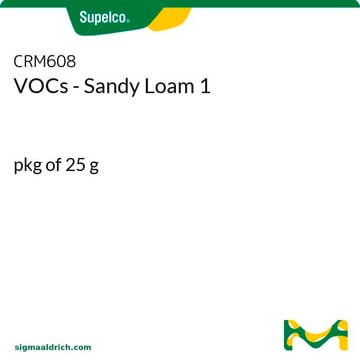If this product has an expiration or retest date, it will be shown on the Certificate of Analysis (COA, CofA). If there is no retest or expiration date listed on the product's COA, we do not have suitable stability data to determine a shelf life. For these products, the only date on the COA will be the release date; a retest, expiration, or use-by-date will not be displayed.
For all products, we recommend handling per defined conditions as printed in our product literature and website product descriptions. We recommend that products should be routinely inspected by customers to ensure they perform as expected.
For products without retest or expiration dates, our standard warranty of 1 year from the date of shipment is applicable.
For more information, please refer to the Product Dating Information document: https://www.sigmaaldrich.com/deepweb/assets/sigmaaldrich/marketing/global/documents/449/386/product-dating-information-mk.pdf
112704
Formaldehyde-sodium bisulfite adduct
95%
Sinonimo/i:
Sodium formaldehyde bisulfite
Scegli un formato
Scegli un formato
About This Item
Prodotti consigliati
Saggio
95%
Stato
solid
Punto di fusione
200 °C (dec.) (lit.)
Gruppo funzionale
hydroxyl
sulfonic acid
Stringa SMILE
O=S(CO)([O-])=O.[Na+]
InChI
1S/CH4O4S.Na/c2-1-6(3,4)5;/h2H,1H2,(H,3,4,5);/q;+1/p-1
UOULCEYHQNCFFH-UHFFFAOYSA-M
Categorie correlate
Descrizione generale
Applicazioni
- Triethyl citrate as a non-toxic solvent in pharmaceutical applications: Explored the use of Triethyl citrate in in-situ forming PLGA implants, focusing on its role as a less toxic solvent compared to traditional options. This application demonstrates the importance of Triethyl citrate in developing safer pharmaceutical formulations (Ramos et al., 2024).
- Triethyl citrate in biodegradable polymer research: Examines the influence of Triethyl citrate on the melt spinning and structural properties of poly(lactic acid) fibers. This study highlights its effectiveness as a plasticizer, enhancing the processability and properties of biodegradable polymers, relevant for controlled drug release systems (Gzyra-Jagieła et al., 2024).
Codice della classe di stoccaggio
11 - Combustible Solids
Classe di pericolosità dell'acqua (WGK)
WGK 1
Punto d’infiammabilità (°F)
Not applicable
Punto d’infiammabilità (°C)
Not applicable
Dispositivi di protezione individuale
Eyeshields, Gloves, type N95 (US)
Scegli una delle versioni più recenti:
Possiedi già questo prodotto?
I documenti relativi ai prodotti acquistati recentemente sono disponibili nell’Archivio dei documenti.
I clienti hanno visto anche
-
How can I determine the shelf life / expiration / retest date of this product?
1 risposta-
Utile?
-
-
How is shipping temperature determined? And how is it related to the product storage temperature?
1 risposta-
Products may be shipped at a different temperature than the recommended long-term storage temperature. If the product quality is sensitive to short-term exposure to conditions other than the recommended long-term storage, it will be shipped on wet or dry-ice. If the product quality is NOT affected by short-term exposure to conditions other than the recommended long-term storage, it will be shipped at ambient temperature. As shipping routes are configured for minimum transit times, shipping at ambient temperature helps control shipping costs for our customers. For more information, please refer to the Storage and Transport Conditions document: https://www.sigmaaldrich.com/deepweb/assets/sigmaaldrich/marketing/global/documents/316/622/storage-transport-conditions-mk.pdf
Utile?
-
Filtri attivi
Il team dei nostri ricercatori vanta grande esperienza in tutte le aree della ricerca quali Life Science, scienza dei materiali, sintesi chimica, cromatografia, discipline analitiche, ecc..
Contatta l'Assistenza Tecnica.












